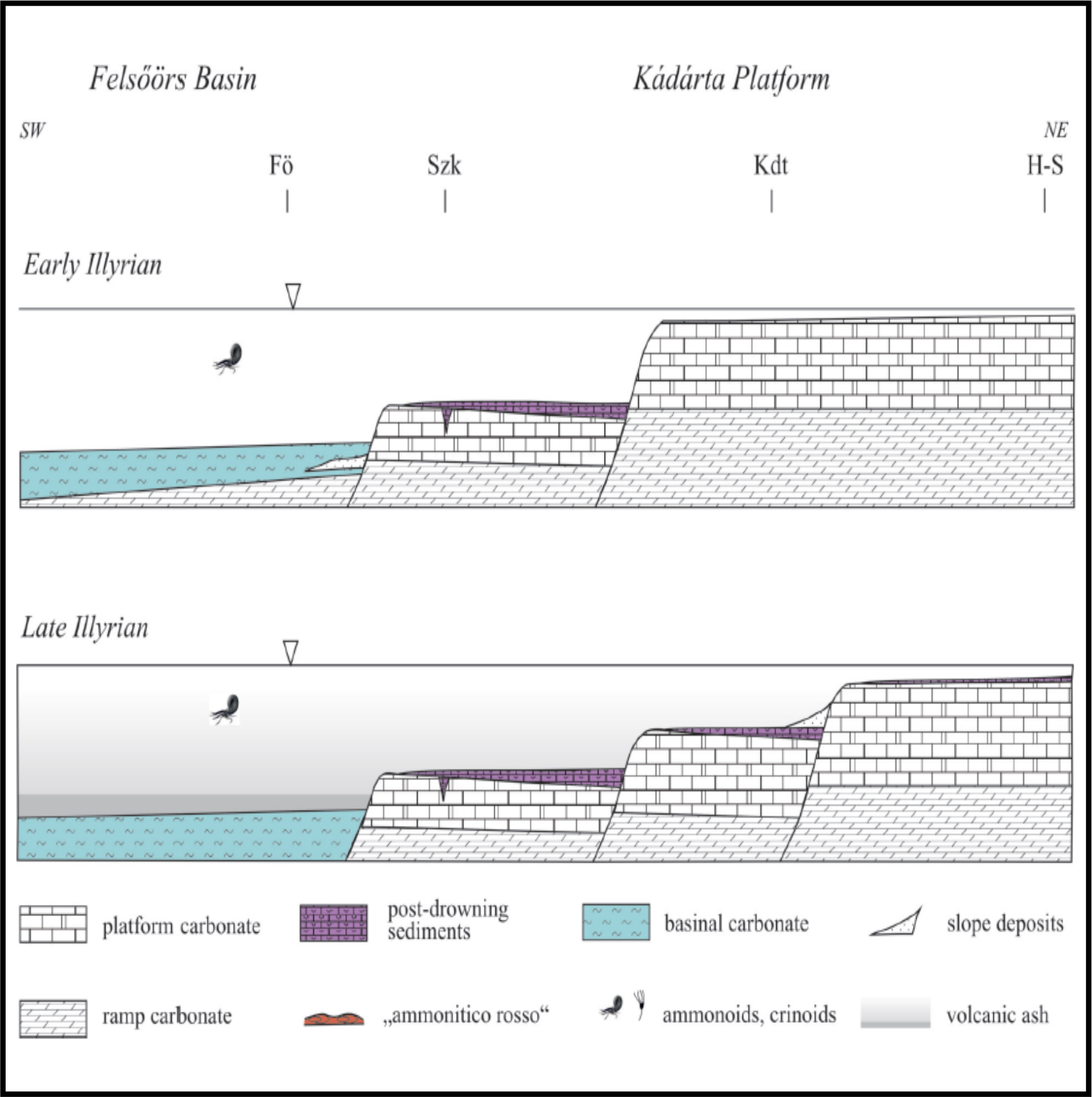Reconstruction of Middle Triassic platform drowning and basin evolution of the Balaton Highland: new micropaleontological constraints
Abstract
Three Middle Anisian carbonate platforms (Barnag, Tagyon and Kádárta Platforms) surrounded by the hemipelagic Felsőörs Basin have been reconstructed in the Balaton Highland. The truncated surface of all platforms is covered by basinal carbonates and volcanic rocks of the Vászoly Formation. Based on conodont investigations these platforms were subject to drowning at different times. The earliest drowning was recognized in the late Pelsonian on the southern edge of the Barnag Platform (Paragondolella bulgarica Zone). This date correlates well with the opening of a neptunian dyke encountered near the southwestern margin of the Kádárta Platform and also with the age of the dykes cutting through Pelsonian platforms in the Northern Calcareous Alps, Aggtelek Hills, Dinarides and Dolomites. Drowning of the Tagyon Platform and the marginal area of the Kádárta Platform occurred in the early Illyrian (Paragondolella bifurcata and Neogondolella constricta Zones). However, the Kádárta Platform shows a trend of decreasing age for the timing of the drowning from the edge towards the inner parts of the platform during the late Illyrian. This can be explained by tectonically forced backstepping of the downfaulted marginal blocks and/or by eustatic sea-level rise accompanied by increasing volcanic activity that may have caused the decrease of transparency of the sea-water. Later on, as a result of intensifying sea level rise bathyal environment formed during the Ladinian that can be confirmed by the appearance and increasing dominance of deep-water ‘psychrosphaeric’ forms in the ostracod assemblage.
















